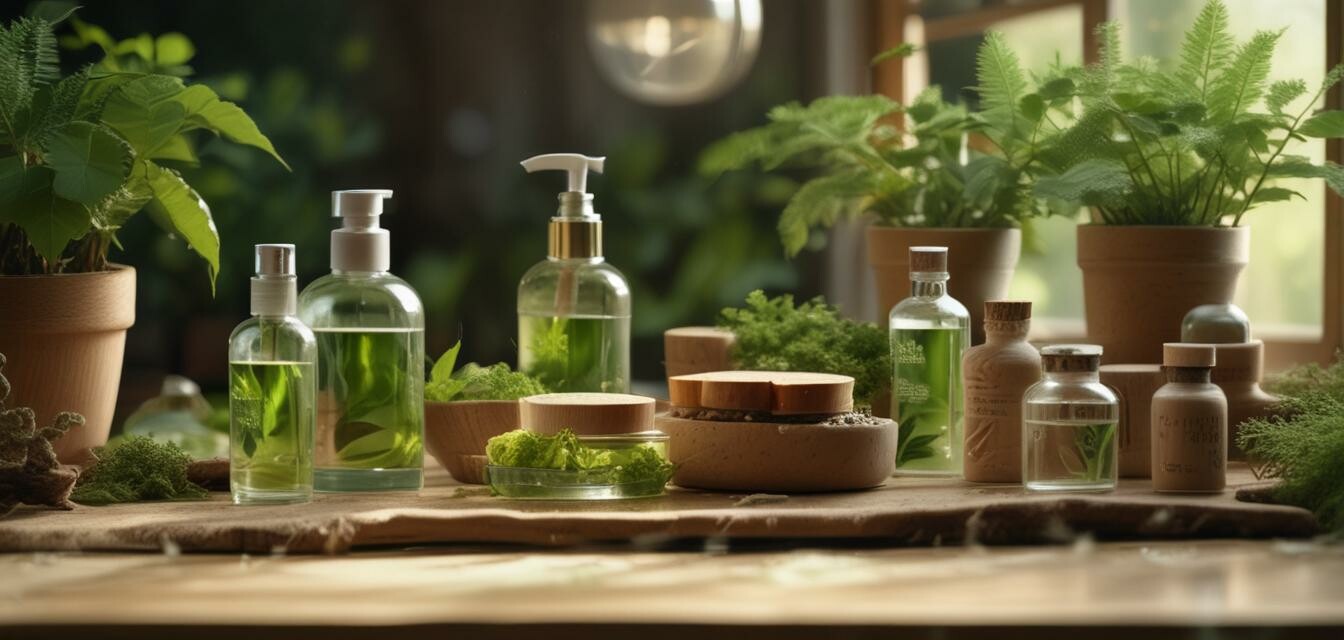
Eco-friendly beauty: The future of anti-aging products
- Growing importance of sustainability in the beauty industry.
- Introduction of innovative eco-friendly anti-aging products.
- Benefits of using natural ingredients for skincare.
- Future trends shaping the landscape of eco-friendly beauty.
- Shifts in consumer preferences towards sustainable practices.
The beauty industry is undergoing a remarkable transformation, with sustainability taking center stage. As consumers increasingly demand eco-friendly alternatives, the rise of eco-friendly anti-aging products is not just a trend; it's a movement. In this article, we'll explore the importance of sustainable practices in the beauty industry, the emergence of innovative anti-aging solutions, and the future of skincare that aligns with environmental consciousness.
The shift towards sustainability in the beauty industry
Over the past few years, there has been a noticeable shift in consumer preferences towards sustainable products. This change is driven by several factors:
- Environmental awareness: People are becoming more aware of the impact of their choices on the environment.
- Health consciousness: Consumers are increasingly looking for products that are free from harmful chemicals.
- Ethical considerations: The demand for cruelty-free and ethically sourced ingredients is rising.
Types of eco-friendly ingredients in anti-aging products
Eco-friendly skincare products often utilize natural ingredients that are known for their benefits in maintaining youthful skin. Here are some common types of ingredients found in these products:
| Ingredient | Source | Benefits |
|---|---|---|
| Shea Butter | Shea tree nuts | Moisturizing and nourishing properties. |
| Jojoba Oil | Jojoba plant | Abundantly hydrating, mimics natural skin oil. |
| Green Tea Extract | Green tea leaves | Rich in antioxidants, helps protect skin. |
| Aloe Vera | Aloe plant | Soothes and hydrates the skin. |
| Coconut Oil | Coconuts | Deeply moisturizing and protecting skin barrier. |
The rise of eco-friendly anti-aging products
As the demand for sustainable beauty products increases, brands are responding by formulating eco-friendly anti-aging solutions. These products prioritize natural ingredients, biodegradable packaging, and ethical sourcing practices.
Innovative packaging solutions
One significant development in the eco-friendly beauty sector is the emergence of innovative packaging. Brands are considering the environmental impact of their packaging materials, leading to the adoption of:
- Recyclable materials
- Biodegradable packaging
- Refillable products
- Minimalist packaging designs
Consumer trends in eco-friendly beauty
Consumers are not only interested in the efficacy of anti-aging products but are also considering their environmental impact. This trend is pushing brands to develop products that are:
- Free from harmful ingredients
- Packaged sustainably
- Ethically sourced and produced
Future directions for eco-friendly anti-aging products
Looking ahead, the future of eco-friendly anti-aging products is promising. Here are some anticipated trends we might observe in the coming years:
| Trend | Description |
|---|---|
| Personalization | Products tailored to individual skin needs and preferences. |
| Tech integration | Use of AI and technology to improve formulation and consumer engagement. |
| Community-driven brands | Emerging brands focused on social responsibility and sustainable practices. |
| Education-first approach | Brands focusing on educating consumers about sustainability and ingredient sourcing. |
The importance of regulation and transparency
With the growing popularity of eco-friendly products, regulation and transparency have become critical. Consumers are demanding more information about the sourcing of ingredients and production processes. This push for transparency is ensuring that brands remain accountable and adhere to sustainable practices.
Tips for choosing eco-friendly anti-aging products
- Look for certifications such as organic or cruelty-free.
- Research the ingredients and their sources.
- Check for sustainable packaging options.
- Stay informed about brand practices and ethics.
As the beauty industry continues to evolve, the integration of eco-friendly practices is becoming vital. Consumers are more empowered than ever to make informed choices regarding their beauty routines. By opting for eco-friendly anti-aging products, individuals can contribute to a sustainable future while maintaining their radiant skin.
Pros
- Environmentally friendly practices promote sustainability.
- Use of natural ingredients reduces exposure to harmful chemicals.
- Supports ethical sourcing which can have positive social impact.
- Innovative packaging can enhance convenience and reduce waste.
Cons
- Some eco-friendly products may be priced higher than conventional options.
- Lack of comprehensive regulation can lead to greenwashing.
- Limited options may not meet everyone's skincare needs.
In conclusion, the future of anti-aging products lies in eco-friendliness and sustainability. The intersection of beauty and environmental responsibility is shaping a new standard in the industry. For more information on the latest trends and products in sustainable beauty, check out our News and Trends section. Additionally, explore our Organic Serums to discover more about natural skincare options.
